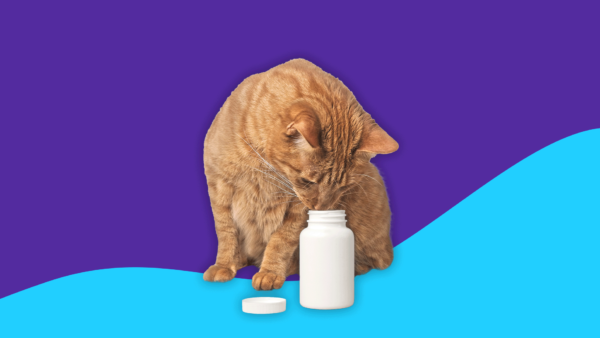How does pet insurance work? | What’s covered? | How to choose pet insurance | Is it worth it?
Bringing home a new pet is fun and exciting, but it can sometimes be costly. Owning a four-legged friend also means caring for their health. Like humans, pets sometimes need prescriptions, surgical procedures, and other medical interventions. So, what about pet insurance? Is it worth it to buy an insurance plan to help protect your new furry family member?
How does pet insurance work?
Pet insurance works by protecting pet owners against unexpected veterinary costs. According to the National Pet Owners Survey for 2019-2020, 67% of U.S. households (around 85 million families) own at least one pet. In 2020, those families spent $31.4 billion on veterinary care and products. Pet insurance can provide peace of mind when deciding whether to go through with a major procedure. Illness and injury treatments can cost pet owners hundreds—or even thousands—of dollars.
“Pet insurance is becoming increasingly popular due to the cost of veterinary care,” says Chyrle Bonk, DVM, a veterinarian working with hepper.com. “Most pet insurance policies cover emergency visits which can be very expensive as well as unexpected and difficult for a pet owner to cover.”
Pet insurance policies come with a monthly premium. If the covered pet gets sick or injured, after paying the full bill to the veterinarian, a pet owner can then submit a claim to the insurance company for reimbursement. Just like with any health insurance, policies vary and a pet owner may also need to pay a deductible and a percentage of the bill. Pet insurance plans may also exclude preexisting conditions and/or certain illnesses.
“You don’t have to have a puppy to enroll in pet insurance,” says Jamie Freyer, DVM, an expert at veterinarians.org “Generally, you can enroll in an insurance plan at any time during your pet’s life.” Dr. Fryer advises that pet owners spend some time picking out a plan that best suits their needs.
“There are a number of plans out there that cover veterinary care, with a wide range of covered services,” she explains. “Some owners may wish to have preventive care and services such as flea and heartworm prevention added to their plan, while others may only be interested in coverage for emergencies.” It really comes down to picking a plan that best works for your pet’s needs and your budget.
What is typically covered with pet insurance?
Pet insurance coverage varies based on the provider and the plan that is chosen. The most basic plans may only cover accidents, or accidents and illness. Most of the more comprehensive pet insurance plans will cover:
- Unexpected accidents or injuries
- Medications
- Surgery
- Unexpected illnesses
- Tests/diagnostics
- Emergency care visits
- Emergency exam fees
Pet insurance won’t cover all costs associated with caring for the health of your pet. Most pet insurance plans do not cover:
- Pre-existing conditions
- Spaying or neutering
- Wellness exams / routine care (can be covered with a wellness plan add-on)
- Vaccinations
How to get pet insurance
So, how do you get pet insurance? There are many pet insurance companies that provide pet insurance plans including:
If you’re wondering how to choose pet insurance, taking the time to research and compare different plans can really pay off. You can also ask your vet if they recommend a certain plan for your pet’s needs. Your vet may also have insight into other client’s experiences with different pet insurance companies. “One thing to be aware of is that some plans will not cover preexisting or breed-specific conditions,” Dr. Freyer says, “so make sure to know what to expect before signing up.”
According to Value Penguin who obtained quotes from 11 of the largest pet insurance companies, on average the monthly cost of a pet insurance plan ranges from about $25 to $70 for dogs and $10 to $40 for cats.
“Most pet insurance policies are open enrollment any time. However, some will have an age cap where they won’t accept pets that are older or those that have a pre-existing or chronic condition,” Dr. Bonk says. “You’ll definitely want to read the fine print if you’re looking to insure a pet over about seven years of age or one that has had some ongoing issues.”
It’s also important to be aware that pet insurance premiums often rise as a pet ages. Most pet owners will purchase an insurance plan when their pet is young and healthy, but around four or five years later the premiums begin to rise (sometimes sharply) simply because the pet is getting older. The value of pet insurance goes up depending on the amount of claims you make, but some policies won’t let you submit a claim right away. Many require 14 days or longer after active enrollment before a claim may be submitted.
Is pet insurance worth the cost?
There are many factors such as cost and amount of coverage to consider in determining whether pet insurance will pay off, and, if so, which plan will best suit your needs.
It’s always a good idea to thoroughly analyze a plan before purchasing—and consider the costs for your pet and your area. “Some plans will only pay out based on what they think the visit should cost, not what it actually costs,” Dr. Bonk says. “That means that if your vet is more expensive than others in the area, some policies will only pay what the average medical costs for your location would be.”
Some other options for saving money on veterinary costs include putting aside money each month for your pet, and using SingleCare for discounts on certain pet prescriptions (SingleCare discounts may not work in conjunction with insurance).
RELATED: How to use SingleCare for pet prescriptions
The bottom line is that pet insurance can be an effective way to protect against hefty veterinary costs for your pet depending on the plan you choose, but like with any insurance—you need to do your research first.











